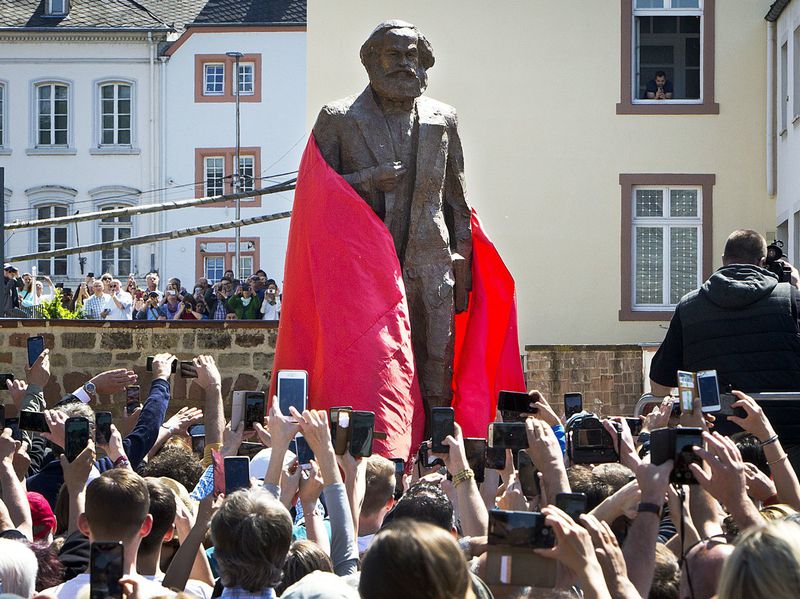Marcial Tardón
From Octubre, Organ of the Communist Party of Spain (ML), January 2019

If we do not investigate history strictly, we could speculate that Winston Churchill, Prime Minister of Great Britain in two periods (1940-45 and 1951-55), was a jovial man, a great leader and a man of much charisma. . However, history tells us that behind this bright facade lies an obscure truth: Churchill carried out an economic and military strategy in Bengal, India, during the Second World War, which caused a famine that ended up killing millions of people. This theme is not taken up in the history books, nor is it remembered as a controversial fact. However, it is worth examining it to make known one of the cruelest and most deplorable events in world history.
Very few people today know about the genocide in Bengal, let alone how Churchill planned it. Churchill’s hatred of the Indian people led several million people to die during the Bengal “famine” of 1943. “I hate Indians. They are a bestial people with a bestial religion,” he said.
The 1943 famine in Bengal was one of several famines in Bengal, an administrative division of British India that was under the British Crown. It is estimated that around 2 million people died of malnutrition in that period. Much of the consequences were due to the decisions of British Prime Minister Winston Churchill, as he feared that the Japanese would advance through Burma and attack the eastern border of Bengal. As a preventive measure, a scorched earth initiative was launched in two parts, eastern and coastal Bengal. The impact of the policies on the development of the famine was decisive. At the end of March 1942, Governor Herbert, acting under the direct orders of Winston Churchill, issued a directive requiring that surplus stocks of rice and other food be removed or destroyed throughout Bengal.
That year Bengal had a better than normal harvest, despite the state of war that extended to the Asian colony. The British army took millions of tons of rice from the hungry people to send to the Middle East, where it was not even needed. When the hungry people of Bengal asked for food, Churchill said that the “famine” was caused by the Bengalis “multiplying like rabbits.” The viceroy of India declared that “Churchill’s attitude toward India and the famine as negligent, hostile and contemptuous.” Even the right-wing imperialist Leo Amery, who was the British Secretary of State in India, said he “did not see much difference between his [Churchill’s] and Hitler’s outlook.” Churchill rejected all offers of aid to send rice to Bengal; Canada offered 10,000 tons. Meanwhile, several million men, women and children died of hunger in Bengal.
The British tried to limit the dramatic situation by attributing it to the bad times that India had had in that period. However, as noted by economist and Nobel Prize winner Amartya Sen, there was no overall shortage of rice in Bengal in 1943: its availability was somewhat greater than in 1941, when there was no hunger. In part, this was what led to the slow official response to the disaster, as there had been no crop loss and, therefore, hunger was unexpected. One of its root causes, says Sen, was the rumors of the shortage that caused hoarding and price inflation. This was caused by the rapid demand in wartime that made rice consignments an excellent investment (prices had already doubled over the previous year). In Sen’s interpretation, while the peasants owners of the land where the rice grew and the workers in industries in urban areas and on the docks saw their salaries rise, it led to a disastrous change in the situation of groups such as landless peasants, fisherfolk, barbers, hullers of rice and other groups who found that the real value of their salaries had been cut by two-thirds since 1940. Churchill prevented the alleviation of the burden on India, and on the contrary increased it. The Indian industries were converted to help in the manufacture of weapons and uniforms for the troops in Africa and those near Japan. This left the large Indian cities without industries for basic necessities that, together with an increase in grain shipments, caused the collapse. When the factories were occupied with arms manufacture, goods such as agricultural and livestock tools were in short supply. This led to a decrease in agricultural production and an inability to deliver the amount of grain that the British required to be produced; Indian landowners delivered the grain to local food warehouses. Having less grain available for trade, the price doubled while with the war effort salaries were frozen for 5 years. This led to 2 million people dying in 1943 in the worst famine in India in the 20th century. In short, although there was enough rice and other grain in Bengal to feed people, they did not have enough money to buy it.
As stated above, more than 2 million people died in Bengal due to this terrible situation. It is one of the most terrible and dishonest crimes against humanity that is known.

